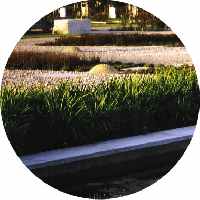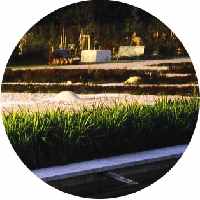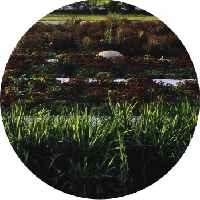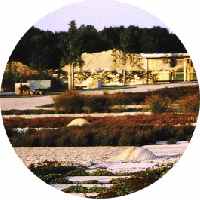Meditation garden at the new cemetery in
Neubiberg
2000
The Meditation garden is a modern offer for reflecting on and
confronting death, as well as a place where visitors can collect
their own thoughts. It is designed to be a protected architectural
structure to help guide cemetery visitors back into the world. The
scent and appearance of healing herbs let visitors move between
stepstones corresponding to the architecture. These are accentuated
at special points by convex and concave terracotta plates. Modeled
of fired clay, their surface encourages visitors to touch them, and
they are reminiscent of prehistoric structures I saw in encounters
with the microscopic world.
Traveling into the microscopic world:
Viewed through the microscope, images appear which do not seem
to have any familiar structures, but remind us of dreamlike forms
we know from the REM sleep phase (rapid eye movement). The more one
delves into spaces hidden to the unaided eye with the REM (raster
electron microscope), the more intense the memory.
As the motive for this work, I chose silicate forms which have
formed the basis of clay-rich areas since the Precambrian, and
which first became visible after the raster electron microscope was
invented.
After magnifying a one-celled organism 5000 times, the image
"tips," revealing formations reminiscent of large, complex
structures such as coral reefs. The aesthetic diversity and complex
structure of these silicate forms are impressive - even in the
digital age. My desire to transform these round images into
three-dimensional forms grew as I looked into the REM. The
unfamiliar images which appear during extreme magnification, show
complex systems of order far removed from linear order, and enable
a view into the future of things. Past and present encounter each
other in the Meditation garden.
|







